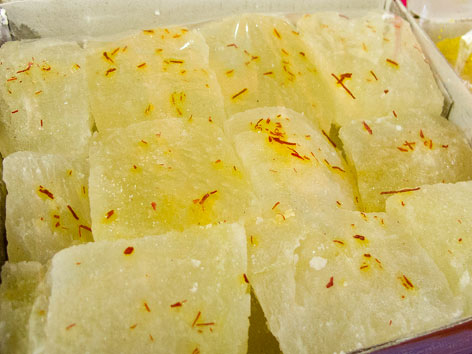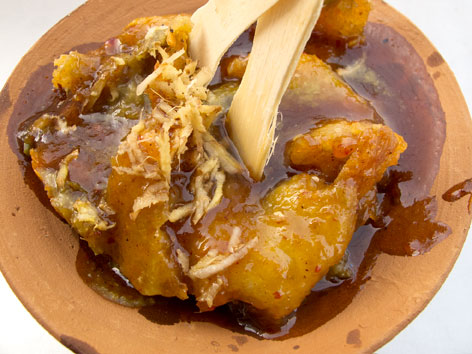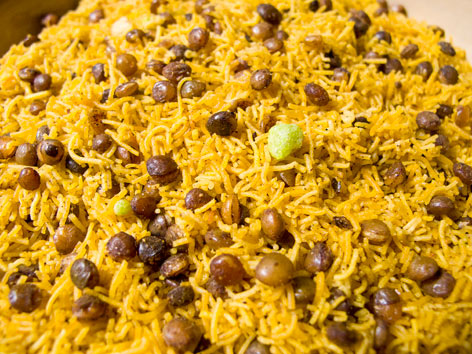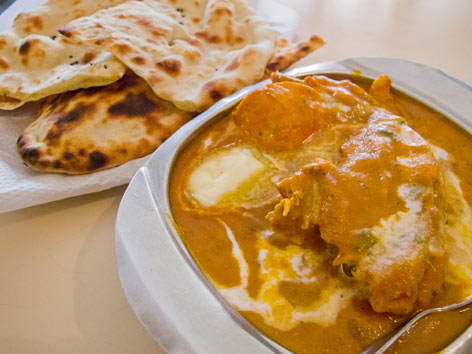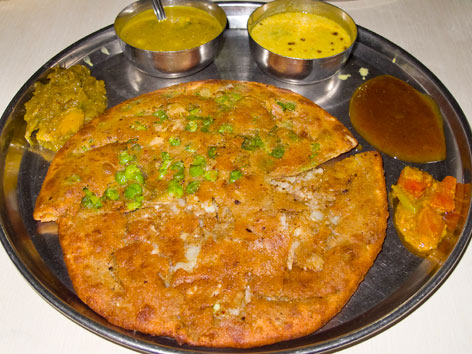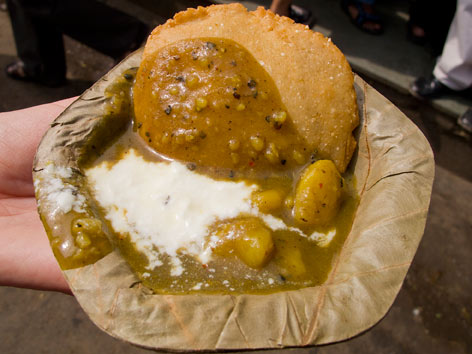What: You’ll start seeing signs for petha the minute you enter Agra. Closely associated with the city’s train stations, where it used to be the platform snack of choice, it’s a centuries-old sweet made from ash gourd—also called white pumpkin or squash—cooked in sugar syrup, and it comes in many varieties: plain (white); kesar (saffron); with nuts; in colorful shades of pineapple, coconut, mango; in small balls or rectangular hunks; served dry or in some syrup. It can be very soft and a bit syrupy inside, or harder and chewy, but it’s always sweet and usually rather floral in taste. Its sugary crystallization reminds us a little of cotton candy—although unlike the latter, petha is believed to have medicinal qualities, benefiting blood pressure, hydration, brain growth, and more.
Where: Our translucent petha is from Panchi Petha House (Fatehabad Rd, approx. map), which turned out to be one of many Panchhi Petha copycats (see below). The petha is still good, but the prices are too high. The staff at least lets you taste before you buy—a good thing, as petha comes by the box.
When: Daily, 9am-10pm
Order: Ask to sample what’s available and choose what you like best. Pictured is the plain petha, laced with saffron (250 rupees for box). At this shop we also tasted the yellow pistachio variety (350 rupees) and multicolored and -flavored petha balls (300 rupees), which were softer in texture. Note that these prices are on the steep side.
Alternatively: We recommend you go to one of the real Panchhi Petha stores, such as that near Hari Parvat crossing, across from the Hari Parvat police station (approx. map). Another trusted name to look for is Pracheen Petha.

